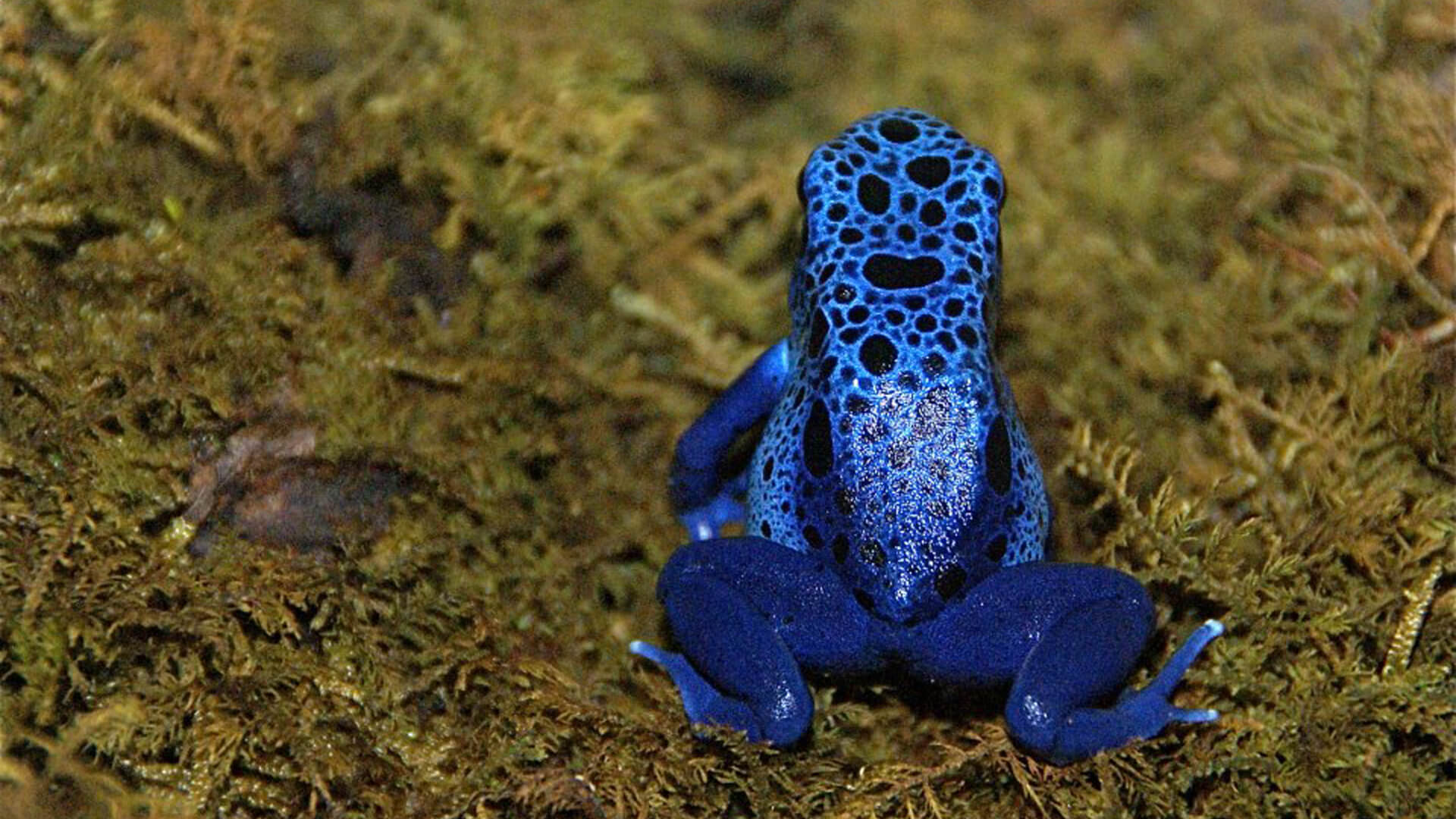
Most animals hide with camouflage, but the poison dart frog does the opposite! Their bright colors are easily seen by predators, and serve to warn of the poisonous skin of the frog. This type of warning is called aposematic coloration.
Poison dart frogs come in a variety of colors, including red, yellow, green, and blue. They gain their toxicity because of what they eat! They eat a variety of ants, termites, and other insect species. These insects eat plants that have toxins, and the toxins are transferred from plant, to insect, to frog. Many species of frogs are nocturnal, in order to hide better. The poison dart frog is the opposite! They are active in the day, when they can be seen the most. Their bright colors warn predators to not eat them.
The poison dart frogs at the Central Florida Zoo are in several different habitats in the Herpetarium. No worries though! The snakes don't bother the frogs and the frogs don't bother them.

Poison dart frogs are not poisonous in human care, because their toxicity is from what they eat in their natural habitat.

Andrea
Poison from poison dart frogs has been used in medical research. A powerful painkiller has been developed based on the poison of the phantasmal poison frog, and secretions are also being used in the development of muscle relaxants and heart stimulants.
South America
Tropical rainforests
2 inches long | .14 ounces
Ants, termites, centipedes, beetles
Larger animals may eat them, but soon learn better
Poisonous
Up to 30 eggs per clutch
Threatened with habitat loss
Up to 15 years
